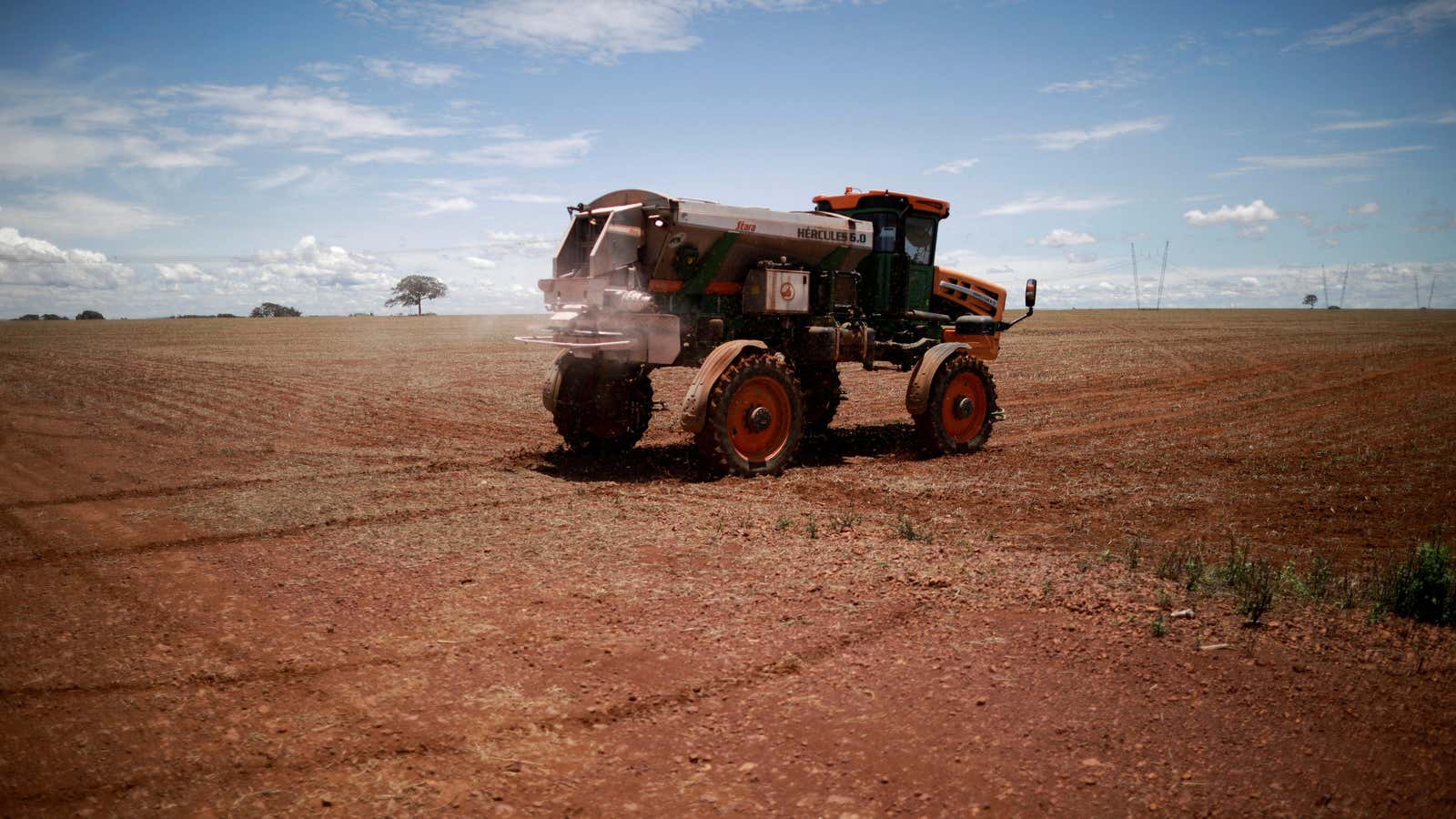The costs that go into growing crops are expected to soar this year, according to recent estimates from the US Department of Agriculture (USDA), signaling that higher food prices are here to stay.
Production costs are estimated to reach $437 billion, up 11% from last year, with fertilizers, which are energy-intensive to manufacture, and pesticides experiencing some of the biggest price increases. Some of this is driven by the Russia-Ukraine war, which has disrupted grain and natural gas shipments. Russia is also a major producer of fertilizers, which may be affected by sanctions.
Food production costs were already high due to higher transportation costs and labor shortages stemming from a pandemic. At the same time, extreme weather like droughts has pushed up the price of commodities like coffee and oats. These global events have pushed food prices to unprecedented levels. According to the latest US Bureau of Labor Statistics data, food prices are up 10.9%, outpacing overall inflation at 8.5% in August.
“It doesn’t mean that they’re not going to come down,” said David Ortega, professor at Michigan State University’s department of agricultural, food, and resource economics. “It’s just that it’s going to take longer for them to come down to much more reasonable levels, especially now, because there’s so many factors at play.” He added that prices tend to rise quickly, but take longer to fall. Historically, agriculture prices were high during events like the 2008 recession and World War I, followed by a return to normal, or a big drop.
There are signals of potential relief in the future. The movement in commodity markets suggest pressures are dissipating relative to a few months ago, said Jayson Lusk, an agriculture economist at Purdue University. Global commodity prices have dropped, but there’s a lag between when these prices fall and when they trickle down to grocery store items.
War and pandemic-related supply chain snags will eventually be resolved and drive retail prices down, but changing climate could keep some costs elevated long term, industry experts say.
A lot is still unknown
The cost of growing food is also a small part of retail prices. Lusk said 85% of the cost is related to what happens after the farm, such as transportation, processing, packaging, and storage.
Though prices are expected to drop, they won’t necessarily go back to pre-pandemic levels due to overall rising costs. “What ends up happening is inflation with the rest of the economy tends to catch up,” said David Just, a professor at Cornell University who focuses on agricultural economics.
The highest costs are also eating into farm net income, but experts say that’s in part due to reduction in pandemic-related government aid and farms needing to adjust to market conditions. Inflation-adjusted net farm income is projected to be around $1 billion lower this year.
Unlike in the US where farmers can take out loans in response to higher prices, farmers in some parts of the world such as Africa and Latin America will use even less fertilizer, resulting in lower production and possibly lower farm incomes, wrote Monika Tothova, an economist at the United Nations’ Food and Agricultural Organization, in an email.
Which costs could have longer-term implications on food production?
More broadly, climate continues to threaten the cost of producing food. More droughts in the future could mean lower yields for certain crops, while rising temperatures could hurt livestock productivity, which can drive food prices up. But it’s hard to disentangle how much of the costs of farming production are climate-related. Lusk said droughts across the west and the Corn Belt are pushing ranchers to slaughter cows prematurely, as they are worried they won’t have enough grass to feed them. In the future, a smaller cattle supply could mean higher beef prices. Another cost that could remain elevated is labor and may require policy intervention. The shortage of workers affects labor-intensive crops like fruits and vegetables.
Overall though, in the past several decades, technology and improvements in farming processes, such as better seed varieties and livestock genetics, have brought down the total cost of food production, helping to make food more affordable in the US. “If we continue to be innovative and develop new science and new technology, we will continue that path toward reducing the total cost of production,” said Lusk. “But that may not be tomorrow. It may not be next year, but [if] we stay on the trend, I think that it’s a more positive assessment.”
